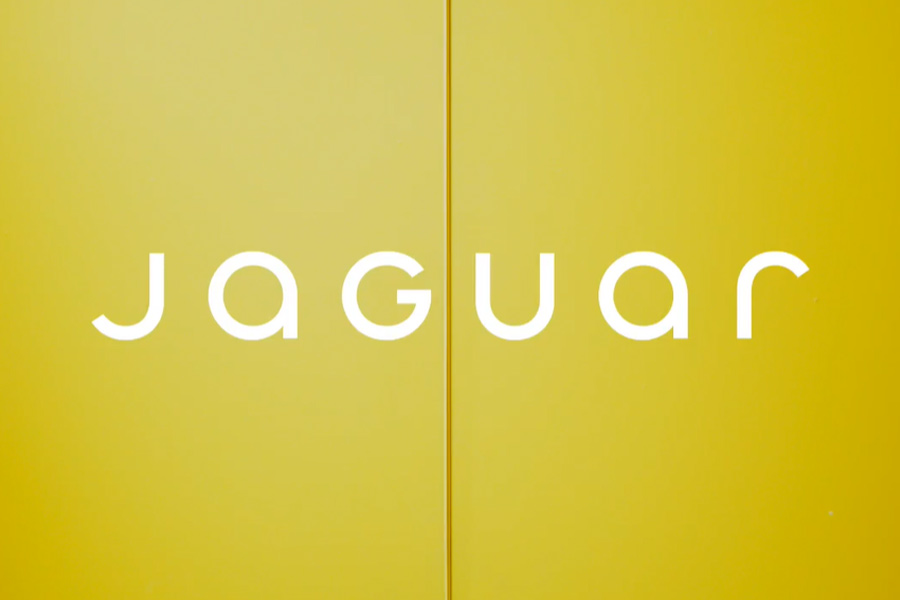“Because of your smile, you make life more beautiful” — Thich Nhat Hanh
It is common knowledge that fingerprints and iris (the coloured part of your eye) are the most distinctive features of an individual. Our set of teeth is another lesser-known metric when it comes to the unique set of characteristics of identifying a person.
Similar to our fingerprints, no two sets of teeth are alike. The normal alignment of teeth varies slightly from person to person but generally follows certain patterns and principles. One of the conditions that deviates from the ideal is an underbite.
What is an Underbite?
An underbite (also known as a reverse bite or a class 3 malocclusion) is a condition where the lower teeth overlap the upper teeth when the mouth is closed. This can cause the lower jaw teeth and jaw to protrude from the overall face boundaries. Underbites can vary in severity from mild to pronounced, and they can affect appearance issues like improper jaw development and facial asymmetry and functional issues with biting and chewing.
Some famous faces who have an underbite are Sylvester Stallone, Michael Douglas, Gautam Gambhir and WWF wrestler The Great Khali.

Dr Kamlesh Kothari
What causes underbite?
Genetics: Family history plays a significant role in the development of underbites. If one or both parents have underbites, their children are more likely to inherit the trait. Commonly, it’s due to the child inheriting the upper jaw from one parent and the lower jaw from another parent, causing tooth and jaw size discrepancy and hence the lower jaw protrusion.
Childhood habits: Prolonged thumb-sucking, pacifier use, or tongue thrusting during childhood can affect the development of the jaws and contribute to the development of an underbite.
Trauma or injury: Trauma to the face or jaw area, such as accidents or injuries during childhood, can disrupt normal jaw alignment and lead to underbites.
Abnormal tooth eruption: Irregularities in the eruption of teeth, such as crowded or misplaced teeth, can affect the alignment of the jaws and contribute to the development of an underbite.
Temporomandibular joint (TMJ) disorders: This is the joint present in front of our ears and are primarily responsible for growth and development of our jaws. Disorders affecting the temporomandibular joint, which connects the jaw to the skull, can sometimes lead to changes in jaw alignment, including underbites.
Certain medical conditions: In some cases, medical conditions such as skeletal malformations, craniofacial syndromes (e.g. Pierre Robin sequence), or neuromuscular disorders can contribute to the development of underbites.
Problems with underbites
Difficulty chewing and speaking: An underbite can affect the proper alignment of the teeth, making it challenging to bite and chew food effectively. This can lead to difficulties in eating certain foods and may also impact speech clarity.
Increased risk of dental issues: Underbites can contribute to various dental issues, including tooth decay, gum disease, and uneven tooth wear. Misaligned teeth may be more difficult to clean properly, increasing the risk of plaque buildup and cavities.
Temporomandibular joint (TMJ) disorders: The misalignment of the jaws in individuals with underbites can put strain on the TMJ, leading to its disorders. Symptoms may include jaw pain, clicking or popping sounds when opening or closing the mouth, and difficulty opening or closing the mouth fully.
Facial aesthetics: Underbites can affect facial aesthetics by altering the symmetry and balance of the face. In some cases, an underbite may cause the lower jaw to protrude, resulting in a less harmonious facial profile.
Self-esteem and confidence: The appearance of an underbite may impact an individual’s self-esteem and confidence, especially during social interactions and when smiling or speaking in public. Teenagers are the most affected.
Functional limitations: Severe underbites can lead to functional limitations, such as difficulty biting into certain foods or discomfort when chewing for extended periods.
Teeth setting complications: Untreated underbites can lead to further orthodontic complications over time, such as teeth shifting, jaw misalignment, and worsening of the underbite.
Early detection is the key and can help minimise complications and improve overall oral health and facial harmony. Therapy typically involves orthodontic intervention, which may include braces, dental appliances, or in more severe cases, corrective jaw surgery to realign the jaws. The exact method of treatment is determined by multiple factors such asage at diagnosis, whether underbite is due to a dental (where the lower teeth alone are forward) or skeletal (where the lower jaw itself is ahead of the upper jaw) component.

The Great Khali
Addressing underbites through appropriate orthodontic treatment or surgical intervention can help improve oral function, and enhance facial aesthetics. Treating an underbite typically involves a combination of orthodontic and/or surgical interventions, depending on the severity of the underbite and the specific needs of the individual.
Treatment
Non-Surgical treatment:
Generally reserved for children with mild to moderate underbite, this modality alone may be sufficient in most cases to correct the alignment of the teeth and jaws over time. However, some would require surgery during adulthood (after 18 years of age), once the jaw growth is nearly complete. Some common non-surgical methods are:
Orthodontic appliances: Various dental appliances, such as expanders, headgear, or bite correctors, may be used in conjunction with braces to help shift the teeth and jaws into the correct position. These appliances apply gentle pressure to the teeth and jaws to encourage proper alignment.
Functional appliances: Functional appliances, such as chin caps or reverse-pull headgear, expanders etc may be used in growing children to guide the growth of the jaws and encourage proper alignment. These appliances are often used in combination with braces or other orthodontic treatments.
Collaborative approach: Treatment of underbites often requires a collaborative approach involving orthodontists, oral surgeons, and other dental specialists. A comprehensive treatment plan will be tailored to the individual needs of the patient to achieve the best possible outcomes.
Dental extractions: It is quite common to have a few less important teeth removed as a part of the overall strategy to correct the underbite. The exact type and the number of teeth to be removed is a decision made on multiple factors.
TMJ therapy: In some cases, adults with underbites may experience symptoms of TMJ disorders, such as jaw pain or clicking.
Surgical Treatment
In cases where the underbite is caused by skeletal discrepancies between the upper and lower jaws, surgery may be necessary to reposition the jaws and improve the bite. Orthognathic surgery, also known as jaw surgery, is performed by oral and maxillofacial surgeons and may involve repositioning the upper jaw (maxilla), lower jaw (mandible), or both.
Maxillary advancement (LeFort I osteotomy): This surgery involves repositioning the upper jaw (maxilla) forward to correct an underbite. The surgeon makes incisions in the upper jawbone and repositions it to align with the lower jaw. Plates and screws are used to secure the jaw in its new position.
Mandibular setback (bilateral sagittal split osteotomy): In cases where the lower jaw (mandible) is protruding, a mandibular setback surgery may be performed to move the lower jaw backward. This surgery involves making cuts in the jawbone near the molars and repositioning the lower jaw backward before securing it with plates and screws.
Chin surgery (Genioplasty): Chin surgery may be performed in conjunction with jaw surgery to enhance facial harmony and aesthetics. Genioplasty involves reshaping and repositioning the chin bone to improve the profile and balance of the face.
Combination surgery: In some cases, both the upper and lower jaws may need to be repositioned to correct the underbite fully. Combination surgery involves performing maxillary advancement and mandibular setback surgeries simultaneously to achieve optimal results.
Orthognathic surgery with orthodontic treatment: Orthognathic surgery is often combined with orthodontic treatment to ensure proper alignment of the teeth and jaws. Orthodontic treatment may be initiated before surgery to align the teeth, and braces or other dental appliances may be used post-surgery to fine-tune the bite.
Multidisciplinary approach: Orthognathic surgery for underbites often requires a multidisciplinary approach involving oral and maxillofacial surgeons, orthodontists, and other dental specialists. A comprehensive treatment plan will be developed based on the individual’s specific needs and treatment goals.
Orthognathic surgery is a significant procedure that requires careful planning and coordination between the surgical and orthodontic teams. It can significantly improve functional bite alignment, alleviate jaw pain and discomfort, and enhance facial aesthetics and self-confidence.
However, it’s essential to consult with a qualified oral and maxillofacial surgeon and orthodontist team to determine the most appropriate surgical approach for correcting an underbite. They will assess the severity of the underbite, evaluate the alignment of the teeth and jaws, and develop a personalized treatment plan tailored to the individual’s specific needs and goals.
Advances in 3D printing, artificial intelligence and digital dental and maxillofacial surgeries have made underbite diagnosis and treatment accurate, minimally invasive and predictable in long term.
Dr Kamlesh Kothari is an oral and maxillofacial surgeon with a focus on cosmetic dentistry and advanced dental and maxillofacial implantology. He can be reached at Aesthetica-Advanced Dental and Implant Clinic, 2/7 Sarat Bose Road, Calcutta (aesthetica.co.in), or at 9830183000 and 033-40035900, or drkamleshkothari@gmail.com.











